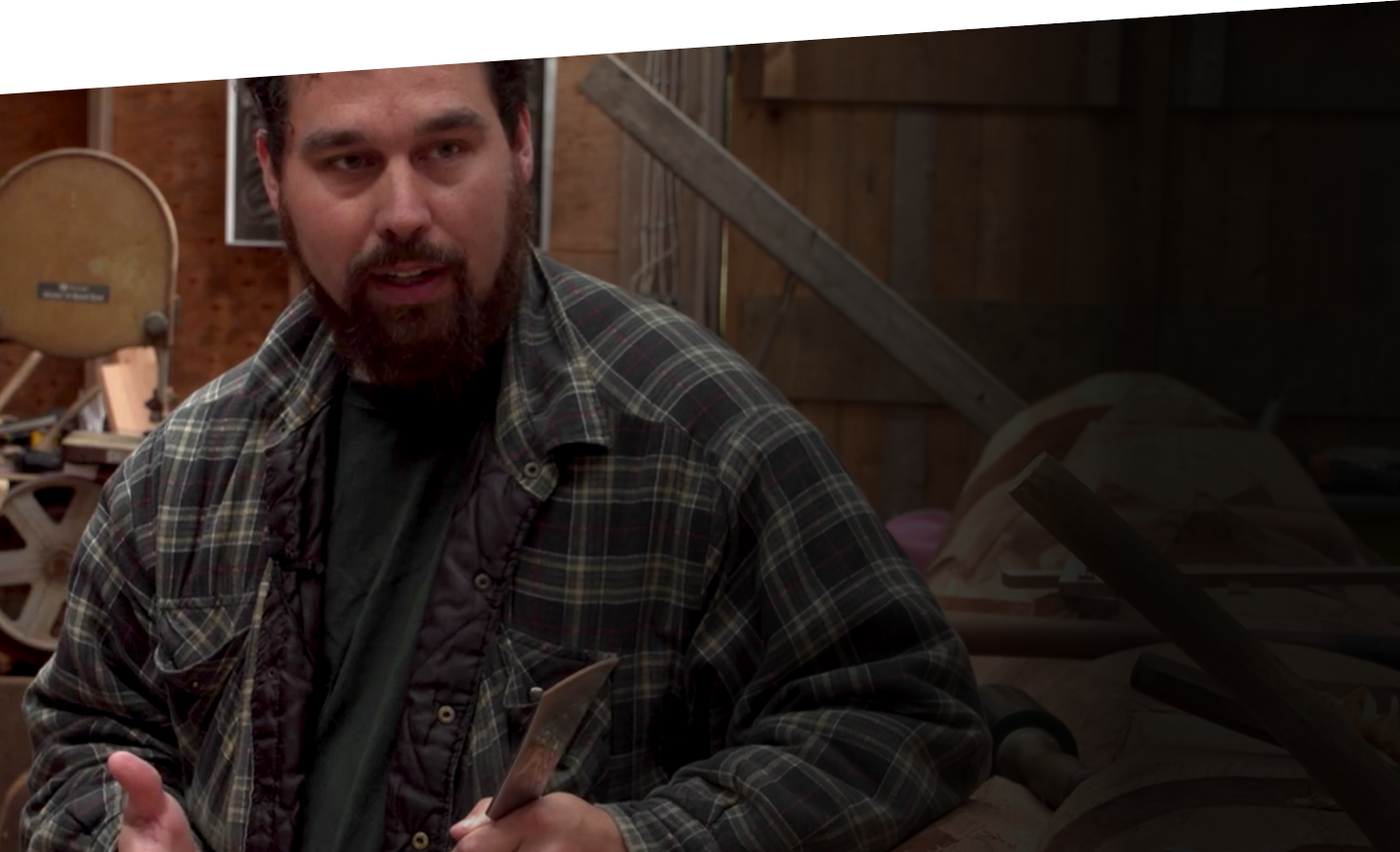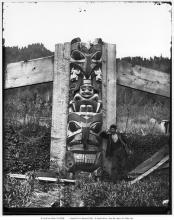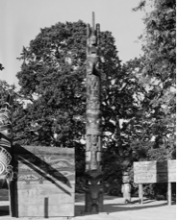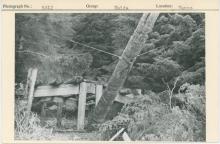JOURNEYS
Origin
This pole stood in front of House That Makes a Noise, a dwelling at T'anuu Llnagaay (eelgrass town, also known as Tanu) on Tanu Island in Laskeek Bay. The house and pole were owned by Gwiskunas, from the lineage of Those Born at Qadasgo Creek, part of the Raven division of the Haida. At one time, there were between 25 to 40 longhouses in T’aanuu Llnagaay, along with 31 mortuary poles and 15 mortuary houses.
This pole is often referred to as the “falling eyes” pole. Artist Emily Carr thought the main figure referred to a weeping woman because its falling eyes looked to her like tears. Rather, it represents the Sea Chief, whose eyes would drop from their sockets and hang down to his waist at night. At mealtimes his friends would place his eyeballs back in their sockets, hold them there, and support his eyelids so that he could see to eat.
The Sea Chief's principal food is hair seal, which he must swallow whole because he has no teeth. After several hours he spits out the undigested bones with great force. He is shown with hanging eyeballs, which take the form of small human figures. On his torso is an image of a frog. Above his forehead, a hair seal is depicted. The hawk-like face flanked by talons at the very top of this section is part of a bird image that belongs to the top section of the pole.
The top figure on the pole is a group of three watchmen wearing ringed hats, a feature of most Haida poles, though some have fewer rings. The figures look out to sea and, according to Haida stories, call out warnings if enemies approach. Tall ringed hats indicate their high status.
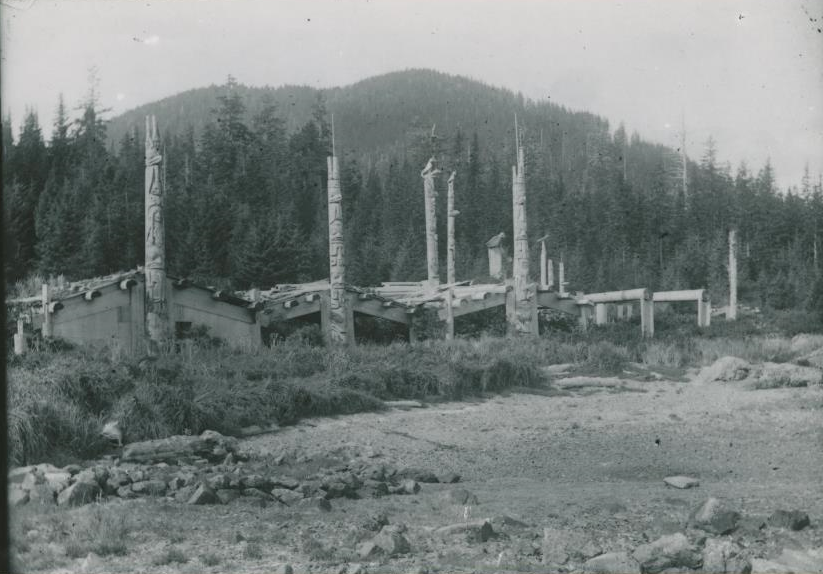
View of the centre of T'anuu Llnagaay in 1897 with the ‘falling eyes’ pole on the left. Charles F. Newcombe photograph. PN 5652.
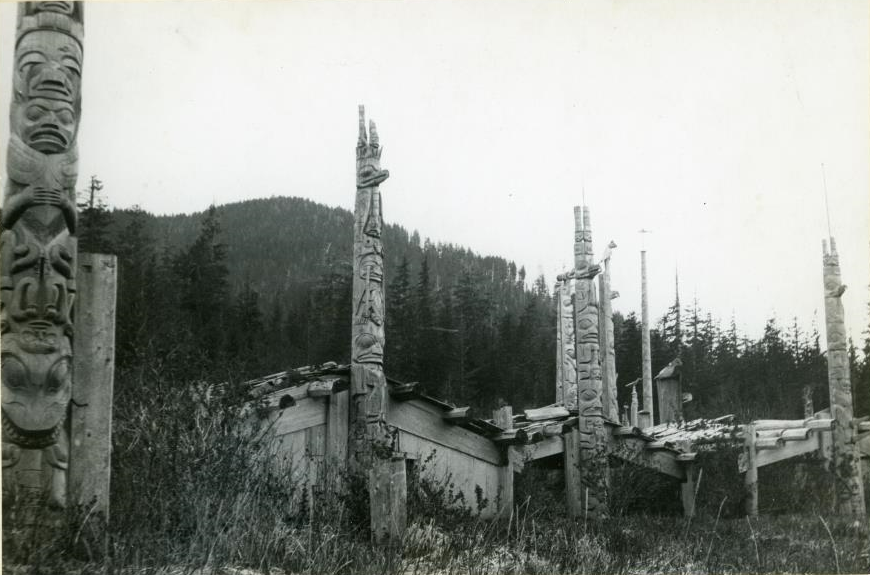
The pole is second from left in this photograph taken in 1901. Charles F. Newcombe photograph. PN 104.
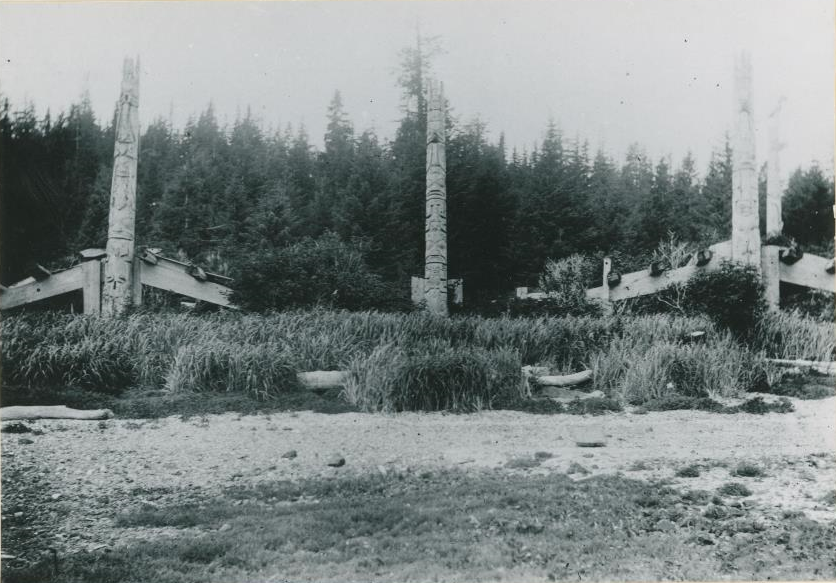
This photograph was taken during Emily Carr’s visit to T'anuu Llnagaay, probably in 1912. The pole she called the ‘crying totem’ is on the left. PN 5542.
Under the watchmen is an eagle, the crest of the house owner’s wife, with the figure of a hawk or owl between its wings. Below that is a hair seal, then the main figure—the Sea Chief—with a frog on his chest. Next is a killer whale with a human figure grasping its tail and its dorsal fin between the knees of another figure; these refer to the story of Nanasimgut, whose wife was abducted by a killer whale. At the bottom is a sea bear swallowing a sea mammal, whose flippers protrude from the side of the whale’s mouth. Small animals look out from the ears of the sea bear.
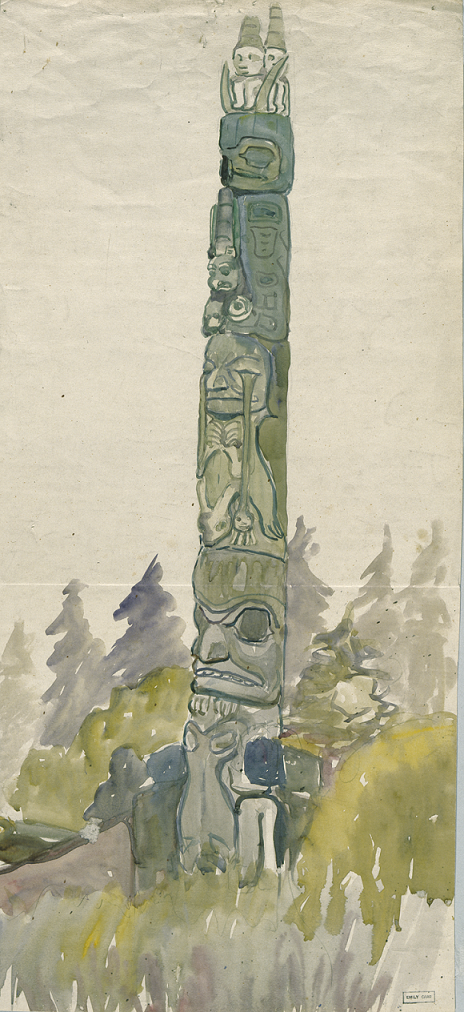
Emily Carr’s watercolour painting of the pole, 1912. PDP02313. Carr’s 1928 oil painting of the pole, The Crying Totem, is in the collection of the Vancouver Art Gallery.
JOURNEYS
Removal
In 1954, by arrangement of the Totem Pole Preservation Committee, the Falling Eyes pole was purchased, taken down, cut into sections for transport, and moved from T'anuu Llnagaay. In 1966 Kwagu’ł carvers Henry Hunt and his son Tony Hunt carved a replica of the complete pole, working from the parts of the pole that came to the Royal BC Museum and also from photographs of the entire pole as it stood at T'anuu Llnagaay.
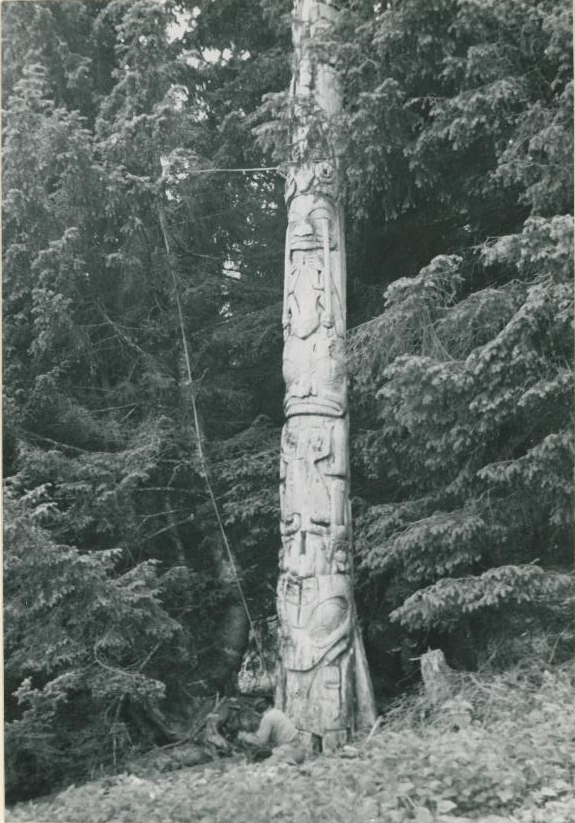
The pole was still standing when the Totem Pole Preservation Committee went to T'anuu Llnagaay in 1954 to salvage remaining poles. Wilson Duff photograph. PN 5749.
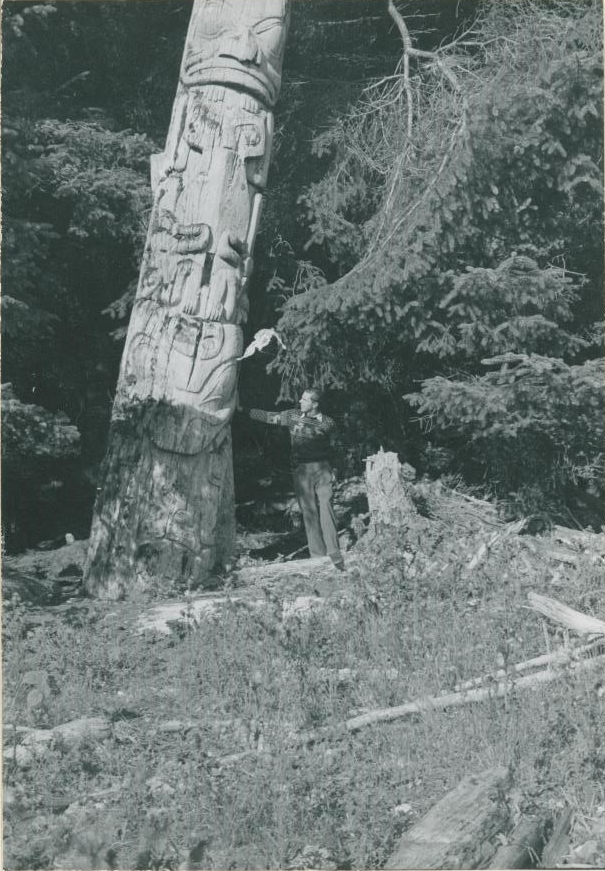
Wilson Duff, curator of anthropology at the BC Provincial Museum (now the Royal BC Museum) and a member of the Totem Pole Preservation Committee examines the pole during the 1954 salvage operation at T'anuu Llnagaay. PN 5754.
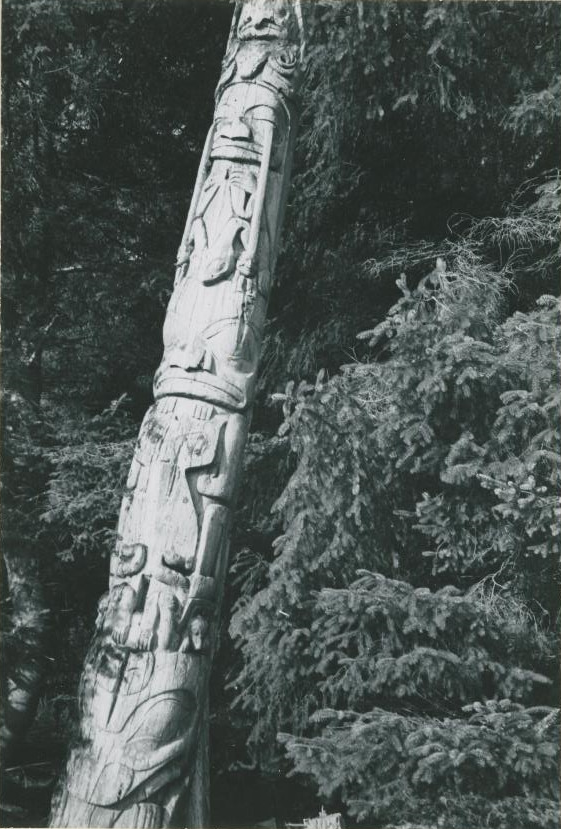
Detail of the pole in situ at T'anuu Llnagaay. Wilson Duff photograph, 1954. PN 5755.
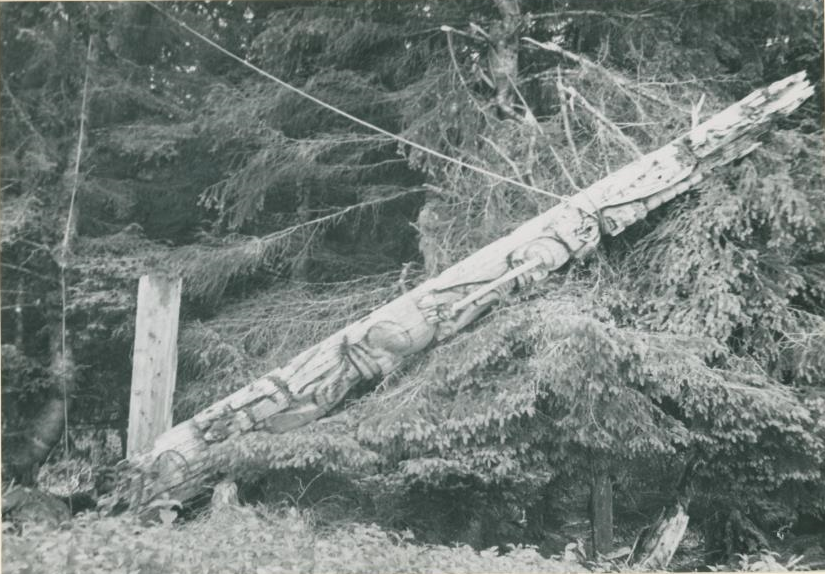
The pole being lowered on roles in preparation for its removal. Wilson Duff photograph, 1954. PN 5746.
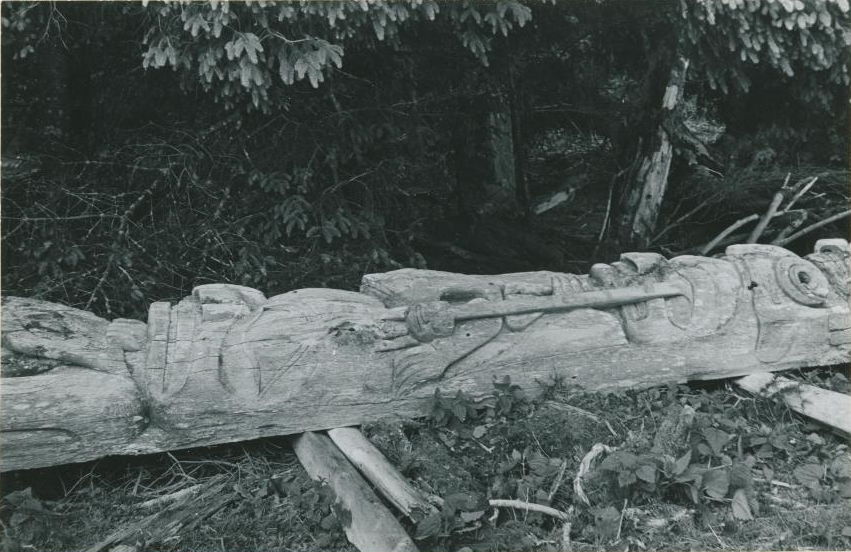
The pole on the ground being prepared for shipment. Wilson Duff photograph, 1954. PN 5753
JOURNEYS
Today
Little is left standing at T’aanuu Llnagaay today, but the spirit of the place is still strong. The house depressions and fallen moss-covered house posts give a strong sense of the layout of the village. T’aanu Llnagaay is part of the Haida Heritage Site although not part of Gwaii Haanas National Park Reserve or the National Marine Conservation Area Reserve.
Two representations of the Falling Eyes pole are on display at the Royal BC Museum—a section of the original pole with the figure of the Sea Chief and the replica of the entire pole.

This pole section is on display behind glass at the east entrance to the Royal BC Museum.
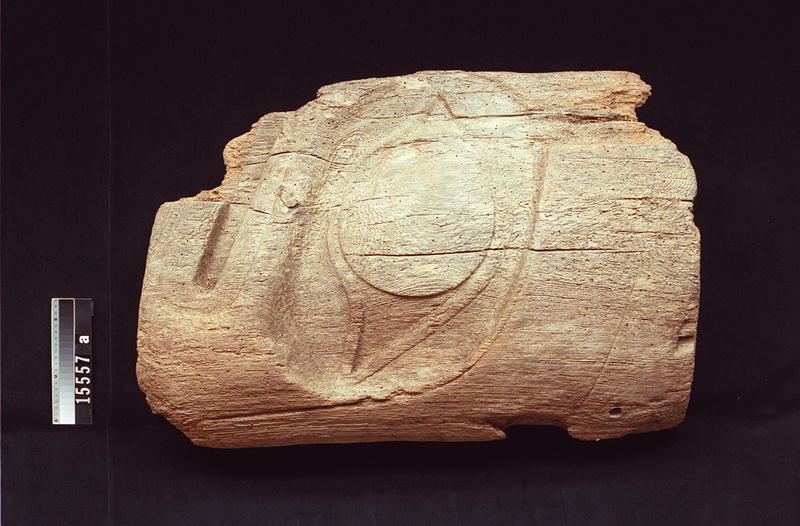
A fragment of the pole from T'anuu Llnagaay is in storage at the Royal BC Museum.
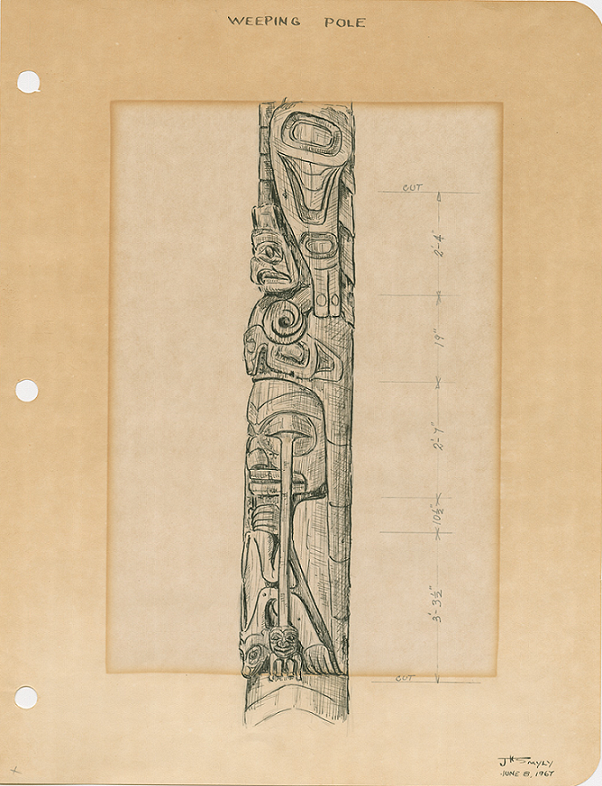
Museum technician John Smyly labelled his drawings of the pole the ‘Weeping Pole.’
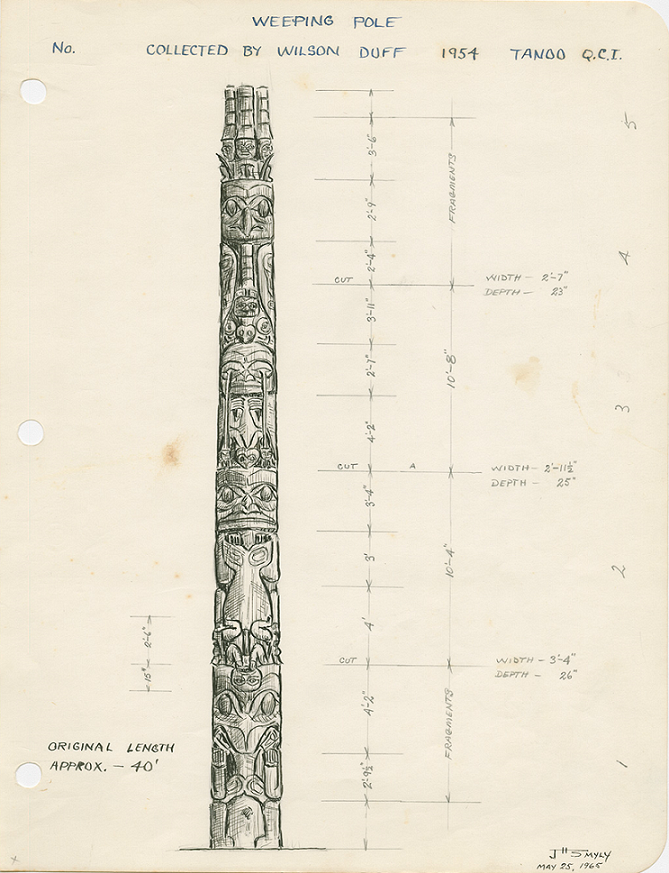
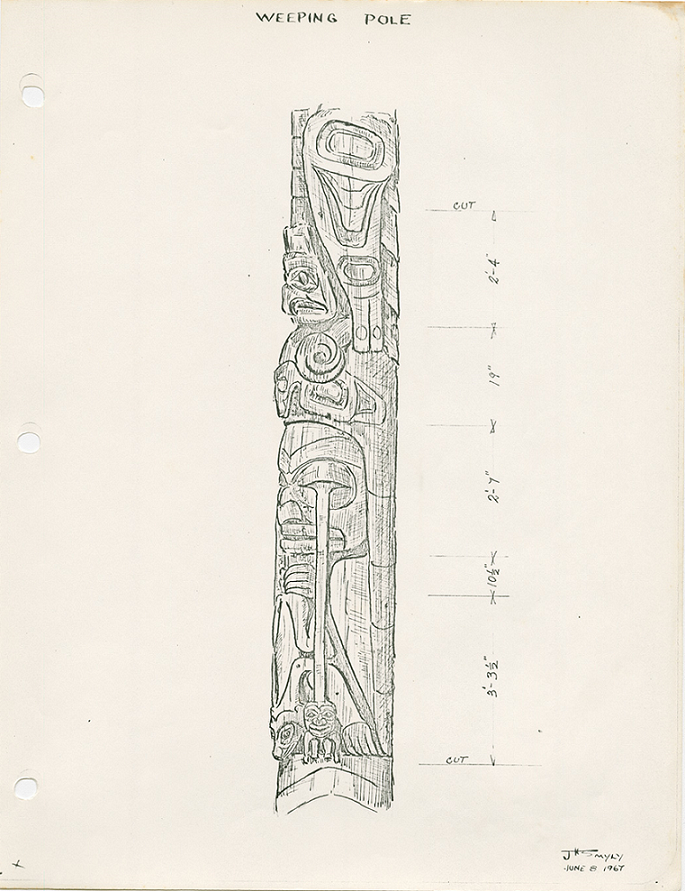
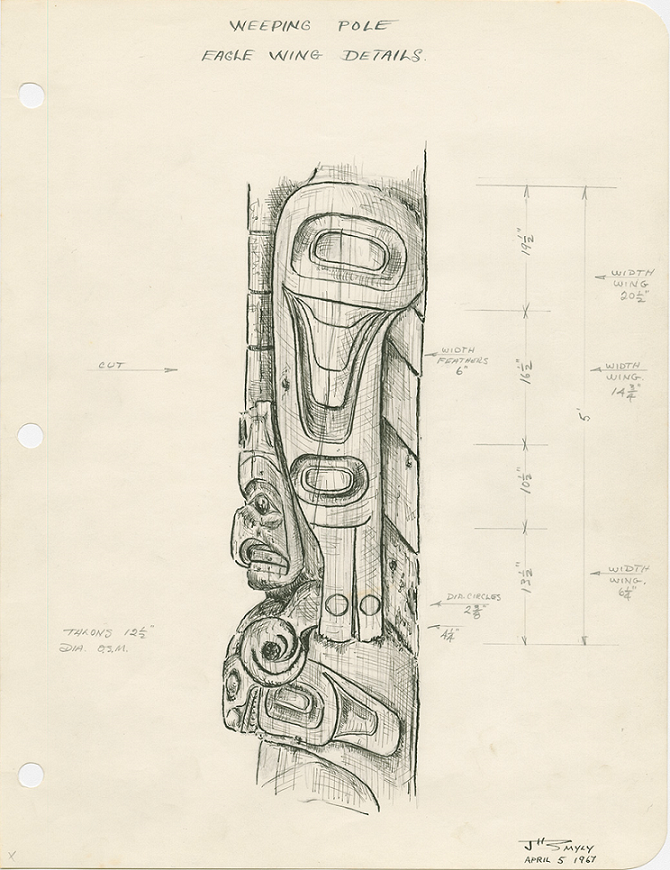
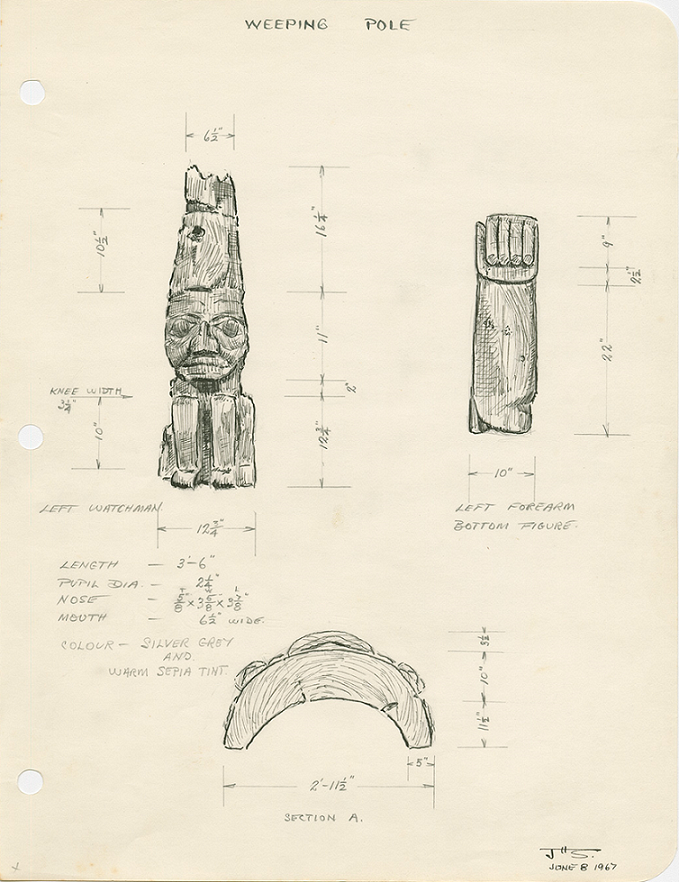
The pole and details of the carving drawn by John Smyly, who restored the pole section now at the museum.
CONNECTIONS
Related Carvings
First Totems Story
First Totems Story
Each Haida pole has its own story but there is a story of the origin of all Haida poles
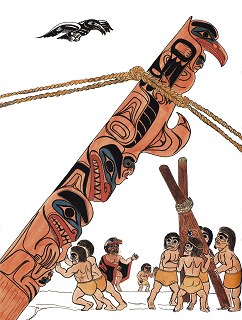
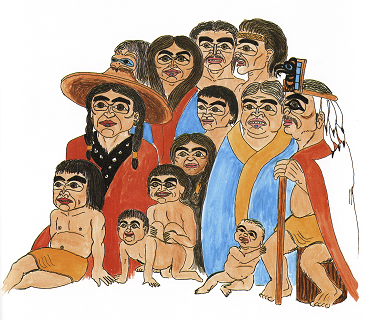
There were many of them at Git̓anḵ’a village.
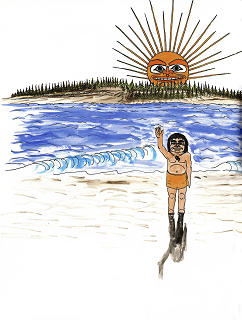
It was very calm. And it was also very sunny.
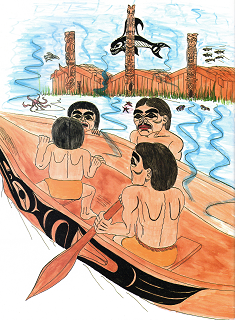
They looked at it for a long time. And they memorized it.

And when they got to Tl’uu sḵans (the crabapple patch at the end of the tree line at Née Kún), they talked about it.

They began to raise the carving.
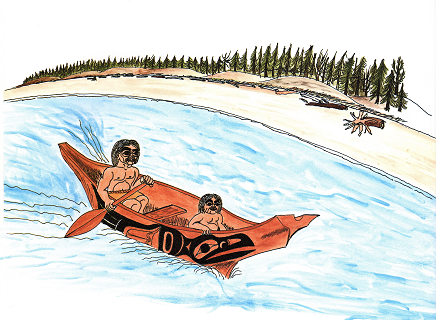
And they went to Daal ḵaahlii.
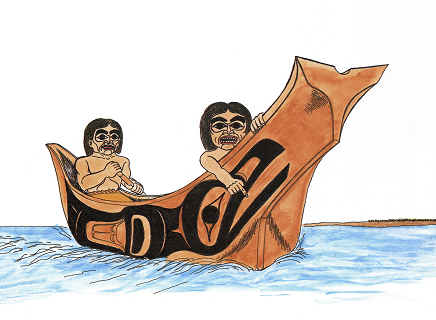
And while she was resting from paddling, this woman was looking in the water. And as she was looking in the water, she saw something that was carved, a long, log-like shape.

When they finished memorizing it, they left.
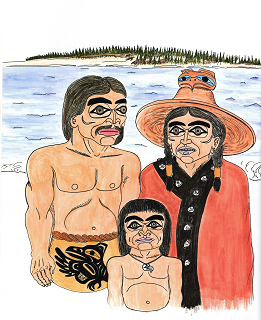
“We will make copies of the carvings on the chief’s house,” some of them said.
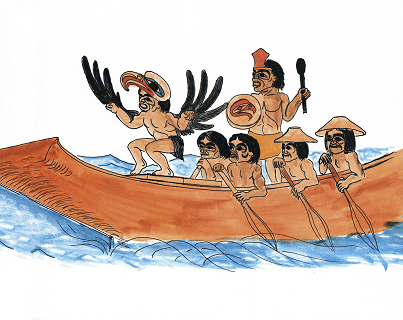
From there, when it was getting to be fall, they went food gathering to Nee Kun in two big canoes. They went on a berry picking trip.

It was a carved image.

And when they were finished getting berries, they returned home by canoe.

People started carving them soon after.


